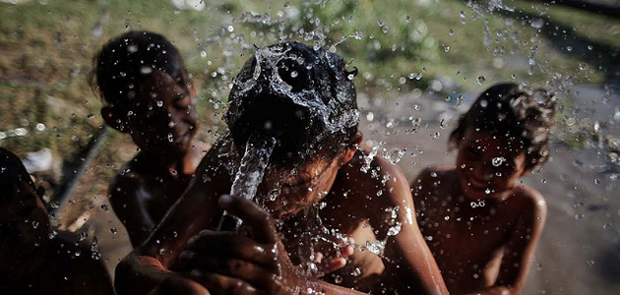Co-written by Tom Wheeler, Conflict and Security Advisor for Saferworld
Last week in New York the United Nations Statistical Commission met to discuss what indicators it can use to measure the new set of development targets that the UN will adopt in September to follow up on the Millennium Development Goals.
This is important because it could determine the outcome of the post-2015 Sustainable Development Agenda. If topics are disputed because the UN thinks they can’t be measured or the wrong indicators are used, it will distort the next phase of how the world works to rid the world of poverty and its causes.
That’s why Transparency International and Saferworld have been working to identify the relevant statistical indicators – the monitoring framework – to deliver on the promise of Goal 16: “peaceful and inclusive societies, justice for all, and open and accountable government institutions”.
This is one of 17 potential goals that the UN is considering for the post-2015 agenda. We believe it is a pivotal goal because it will help combat corruption, which threatens the well-being of the poor disproportionately and undermines peace. Where people have access to justice, and government is accountable, there is less room for corruption and violent conflict and insecurity.
So what should the monitoring framework include? At present there are 12 targets identified under Goal 16. This is where statistics and indicators get interesting. Without the right indicators, it won’t be possible to know, for example, whether a target to “substantially reduce corruption and bribery” has actually been met.
We believe that indicators should be chosen based on clear criteria and provide a mix of data collected from official and non-official sources.
For Goal 16, this would include:
- Administrative data points collected by governments. This is already happening – we just need to make the data better and more widely used. For example, we believe that corruption in government procurement happens when there is no information about procurement tenders – so we need to monitor data about the percentage of publicly available procurement tenders. The same can be said about monitoring advances on peace and safety, by using government figures on violent deaths for example.
- Surveys (experiential, factual, opinion): these would capture and collate the experiences and perceptions of citizens of key issues related to governance, justice and peace. For example, there would be a survey asking if people had paid a bribe to access a government service or whether people feel safe.
- Expert assessments of relevant regulations and performance by organisations like Global Integrity, International Budget Partnership, or Transparency International.
We also need to look at different types of indicators to capture a full story of progress, especially on the complex issues related to peace, governance and justice in Goal 16. We need to show that effort is being made to address the problem (using “capacity” or “input” indicators, for example measuring the number of judicial personnel per 100,000 people). We need to show change is happening on the ground (“objective” or output indicators, such as reduced case backlogs). Finally, we need to show that people see the differences in their lives (through indicators that show whether people feel improvements have been achieved –for example, measuring whether citizens have confidence in the justice system).
Many different organisations collect and analyse data on these issues. So the key will be to embrace partnerships that can provide regular evidence of progress. Civil society, the private sector and governments can and must work together in these efforts.
In the age of “open” government, budgets, contracts and aid, there is no reason why data should remain the remit of statistical offices. In 2013 the UN set up a specific group to look at broadening its data-gathering. Called the UNSC Friends of the Chair Group, it says “the necessary data revolution is a joint responsibility of governments, international and regional organisations, the private sector and civil society”.
Citizen or third-party generated data complements what governments collect and fills potential gaps. The UN understands that measuring the new goals will be difficult and it must be open to all the help it can get, with the obvious proviso that the data is vetted and validated, just like officially collected government data.
While statistical offices will lead on the data collection task, there are opportunities for a range of civil society actors to get involved. There is a shared responsibility for all stakeholders to ensure the right indicators are adopted, expanded and enhanced to provide real accountability on the development promises that world leaders will make in September 2015.
This blog has been republished by Saferworld here.
Carousel image: Copyright, Transparency International / Ahmed Deeb
















 Connect with us on Facebook
Connect with us on Facebook Follow us on Twitter
Follow us on Twitter